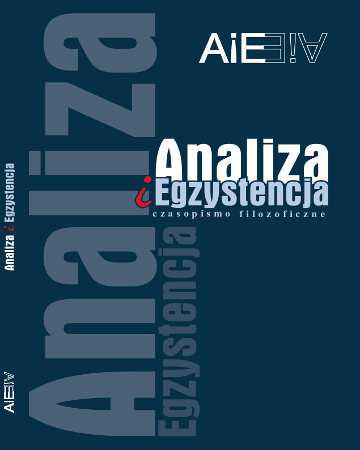
ISSN: 1734-9923
eISSN: 2300-7621
OAI
DOI: 10.18276/aie.2022.57-02





Issue archive /
57 (2022)
Czy istnieje percepcja nieuwarunkowana? Wittgenstein a Bohm
(Is there unconditional perception? Wittgenstein and Bohm)
| Authors: |
Katarzyna
Gurczyńska-Sady

Uniwersytet Pedagogiczny im. KEN w Krakowie |
| Keywords: | Wittgenstein Bohm unconditional perception seeing as thought proprioception |
| Whole issue publication date: | 2022 |
| Page range: | 24 (25-48) |
Abstract
Does it exist an unconditional perception? Wittgenstein and Bohm
The article deals with the issue of perception. In it I present Wittgenstein’s concept of “seeing as” and Bohm’s concept of thinking as a reflex. By pointing to the
similarities and differences in their views, I am trying to pose the question of what
makes our perception conditioned. Having assessed this fact, I then pose a question
about the possibility of unconditioned perception. Thus, I will try to answer two
questions: are there reasons why we should free ourselves from this type of perception (?), and whether and how it is possible at all (?).
Download file
Article file
Bibliography
| 1. | Bargh, John A., and Tanya L. Chartrand. (1999). „The unbearable automaticity of being” w: American Psychologist, nr 54/7, (s. 462–479). |
| 2. | Barry, D.K. (1996), Forms of Life and Following Rules. A Wittgenstein Defence of Relativism, Leiden: E.J.Brill. |
| 3. | Baz, A. (2000), „What’s the Point of Seeing Aspects” w: Philosophical Investigations 23, (s. 97-121). |
| 4. | Bohm, D. (1980), Wholeness and the Implicate Order, New York: Routledge. Wyd. pol. Ukryty porządek, Warszawa: Pusty Obłok. |
| 5. | Bohm, D., Hiley, B. J., (1993), The Undivided Universe: An Ontological Interpretation of Quantum Theory, Routledge. |
| 6. | Bohm, D., Krishnamurti, J. (1985) The Ending of Time, Londyn: Gollancz. Wyd. pol. Wolność od czasu, tłumacz nieznany, Wrocław: Thesaurus. |
| 7. | Bohm, D., (1992), Thought as a System, New York: Routledge. Hacker, P.M., (1972) Inside and Illusion, Oxford: Clarendon Press, (s.199-214). |
| 8. | Mullhall S., (1990), On Being in the World. Wittgenstein and Heidegger on Seeing Aspects, London: Routledge. |
| 9. | Northon A., Smith Ch. (2020), „Towards the Source of the Thought: Insight from David Bohm on a Sustainable Future” w: The Journal of New Paradigm Research, 76/2020, (s. 153-166). |
| 10. | Scholz W., (2010), The phenomenology of Movement: Action, Proproception and Embodied Knowledge, University of Iowa Research on line, DOI: 10.17077/etd.s22md1wn. |
| 11. | Tillmanns M. (2019), The Application of Proprioception of Thinking to Doing Philosophy with Children w: Socium i vlast , nr 4/78, (s. 62—68). |
| 12. | Wittgenstein, L., (1958), Dociekania filozoficzne, Warszawa: PWN. |
| 13. | Wittgenstein, L., (1999), Kartki, Warszawa: Wydawnictwo KR. |
| 14. | Wittgenstein L., (1980), Remarks on the Philosophy of Psychology, t. I, Oxford: Basil Blackwell. |